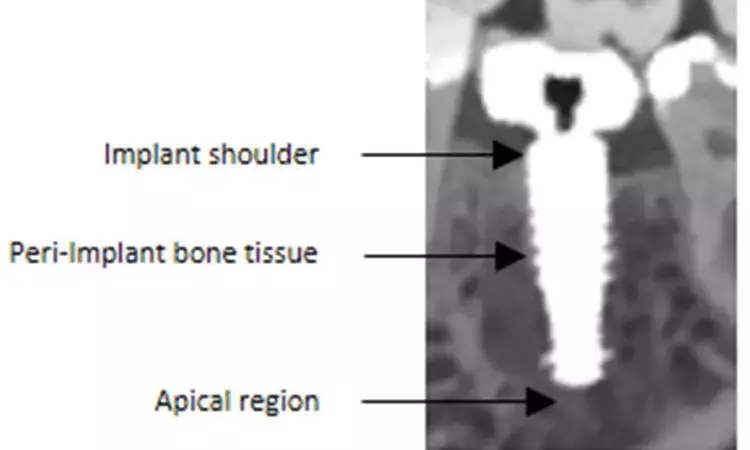- Home
- Medical news & Guidelines
- Anesthesiology
- Cardiology and CTVS
- Critical Care
- Dentistry
- Dermatology
- Diabetes and Endocrinology
- ENT
- Gastroenterology
- Medicine
- Nephrology
- Neurology
- Obstretics-Gynaecology
- Oncology
- Ophthalmology
- Orthopaedics
- Pediatrics-Neonatology
- Psychiatry
- Pulmonology
- Radiology
- Surgery
- Urology
- Laboratory Medicine
- Diet
- Nursing
- Paramedical
- Physiotherapy
- Health news
- Fact Check
- Bone Health Fact Check
- Brain Health Fact Check
- Cancer Related Fact Check
- Child Care Fact Check
- Dental and oral health fact check
- Diabetes and metabolic health fact check
- Diet and Nutrition Fact Check
- Eye and ENT Care Fact Check
- Fitness fact check
- Gut health fact check
- Heart health fact check
- Kidney health fact check
- Medical education fact check
- Men's health fact check
- Respiratory fact check
- Skin and hair care fact check
- Vaccine and Immunization fact check
- Women's health fact check
- AYUSH
- State News
- Andaman and Nicobar Islands
- Andhra Pradesh
- Arunachal Pradesh
- Assam
- Bihar
- Chandigarh
- Chattisgarh
- Dadra and Nagar Haveli
- Daman and Diu
- Delhi
- Goa
- Gujarat
- Haryana
- Himachal Pradesh
- Jammu & Kashmir
- Jharkhand
- Karnataka
- Kerala
- Ladakh
- Lakshadweep
- Madhya Pradesh
- Maharashtra
- Manipur
- Meghalaya
- Mizoram
- Nagaland
- Odisha
- Puducherry
- Punjab
- Rajasthan
- Sikkim
- Tamil Nadu
- Telangana
- Tripura
- Uttar Pradesh
- Uttrakhand
- West Bengal
- Medical Education
- Industry
Photon-counting computed tomography Improves Peri-Implant Bone Imaging Accuracy, reveals study

Researchers have found in a new study that photon-counting computed tomography (PCCT) offers clearer visualization of peri-implant bone structures, reducing artifacts and enhancing diagnostic precision. The study, published in the International Journal of Implant Dentistry, compared PCCT with cone-beam computed tomography (CBCT) for evaluating peri-implant bone thickness in patients with dental implants. Metal implants often cause streaking and beam-hardening artifacts in imaging, which can obscure fine bone details and potentially lead to diagnostic errors. The researchers aimed to assess whether PCCT, a newer imaging technology, could overcome these limitations. In the in vivo trial, participants underwent both PCCT and CBCT scans of their implant sites. Bone thickness measurements obtained from each modality were compared against reference values derived from high-resolution micro-CT. The results were clear: PCCT achieved a mean deviation of only 0.06 ± 0.08 mm from the reference, while CBCT showed a significantly larger mean deviation of 0.39 ± 0.34 mm. Image quality assessments supported these findings. PCCT images had markedly less noise and fewer metal-induced artifacts, allowing for sharper visualization of the bone–implant interface. Independent expert readers rated PCCT images higher in overall diagnostic quality, with excellent inter-reader agreement (intraclass correlation coefficient > 0.75). Beyond accuracy, the study highlights PCCT’s potential to improve clinical decision-making in implant dentistry. More precise bone measurements can help dentists identify early signs of peri-implant bone loss, guide surgical planning, and evaluate implant stability over time. By minimizing the risk of false positives or missed bone defects, PCCT could enhance patient outcomes and reduce the need for additional scans. The authors conclude that PCCT represents a significant advancement over conventional CBCT for peri-implant imaging. However, they note that broader adoption will depend on factors such as equipment availability, cost considerations, and further validation in larger, more diverse patient populations.
Keywords: photon-counting CT, PCCT, CBCT, peri-implant bone imaging, dental implants, image accuracy, metal artifacts, implant diagnostics
Dr. Shravani Dali has completed her BDS from Pravara institute of medical sciences, loni. Following which she extensively worked in the healthcare sector for 2+ years. She has been actively involved in writing blogs in field of health and wellness. Currently she is pursuing her Masters of public health-health administration from Tata institute of social sciences. She can be contacted at editorial@medicaldialogues.in.


